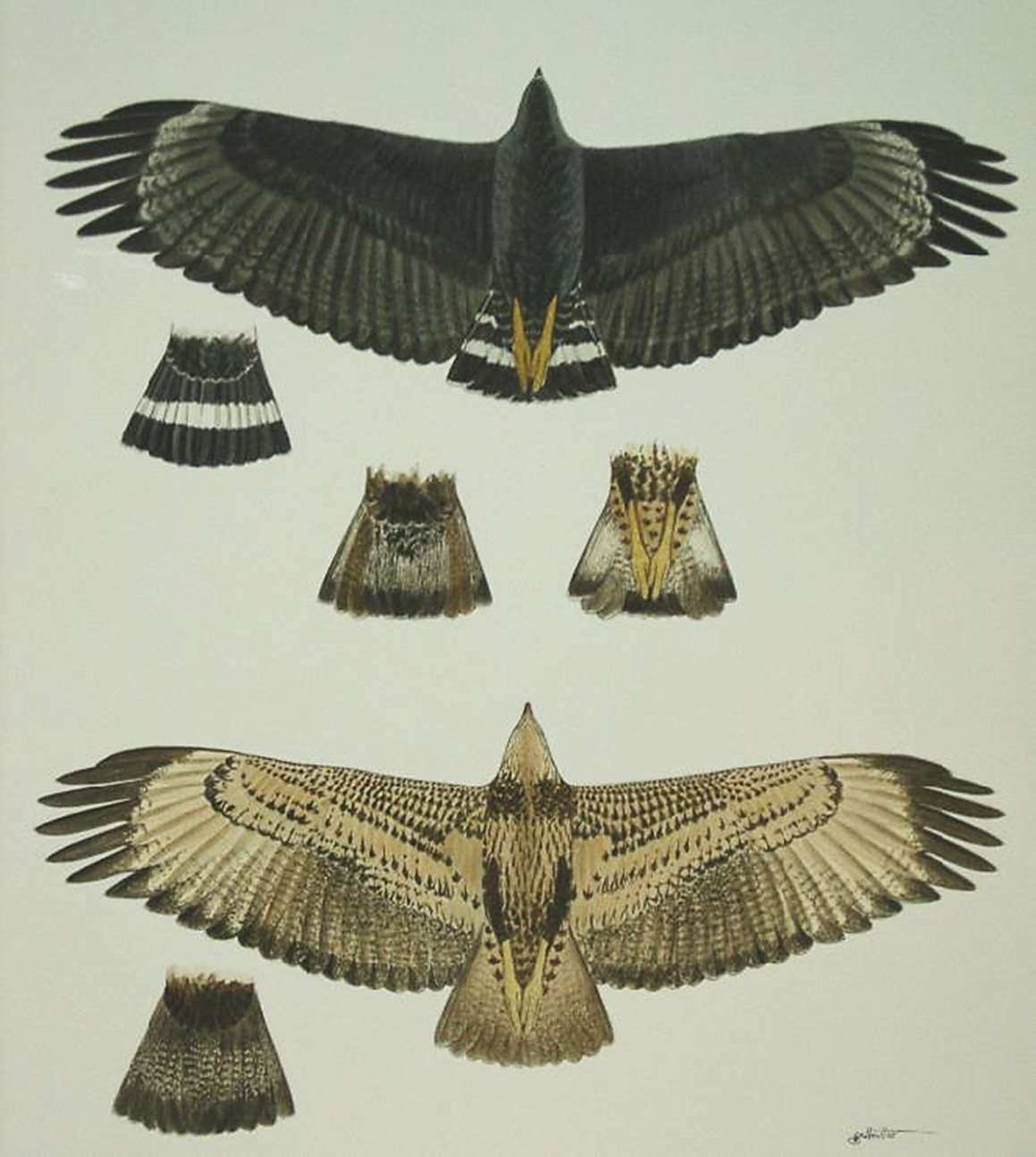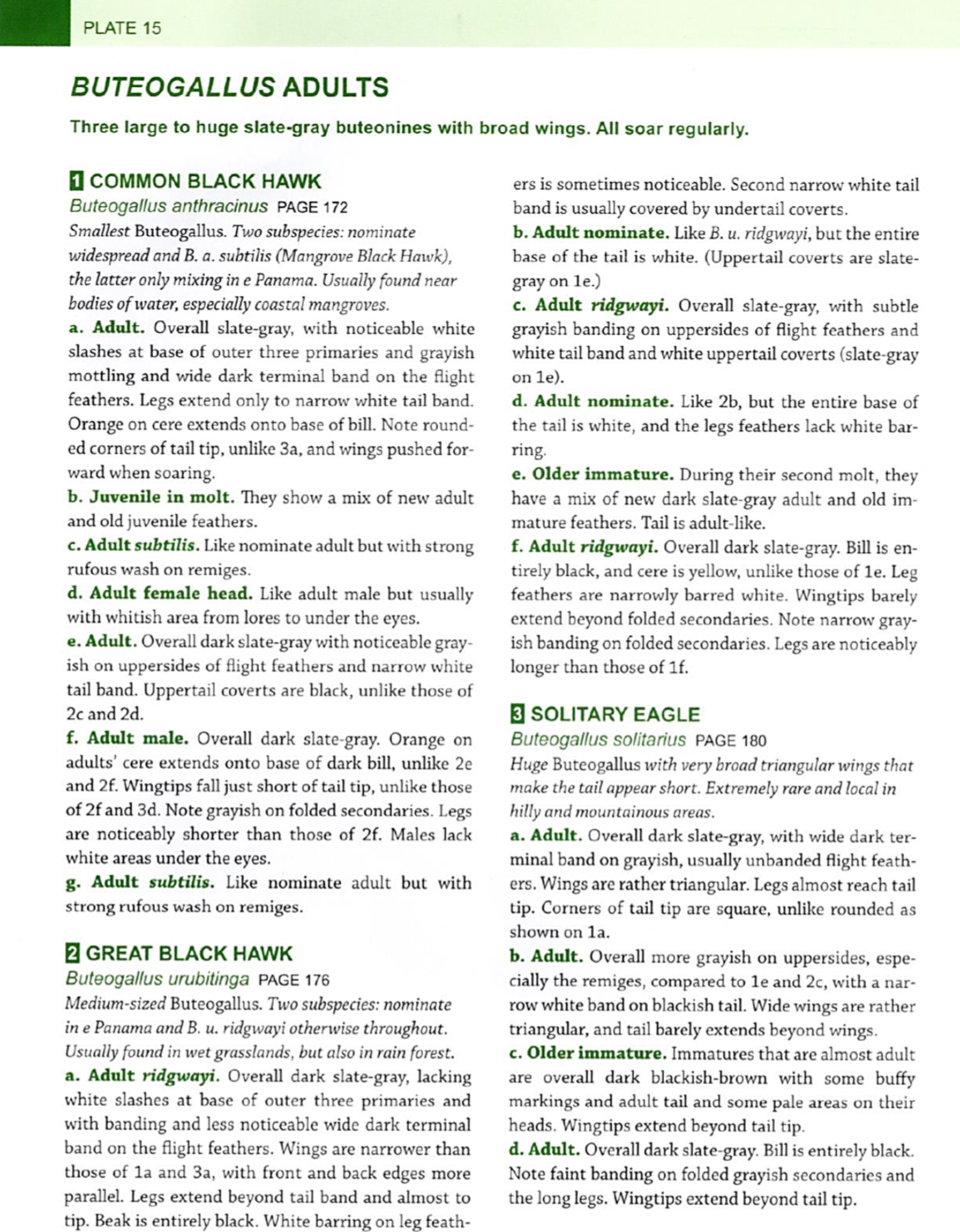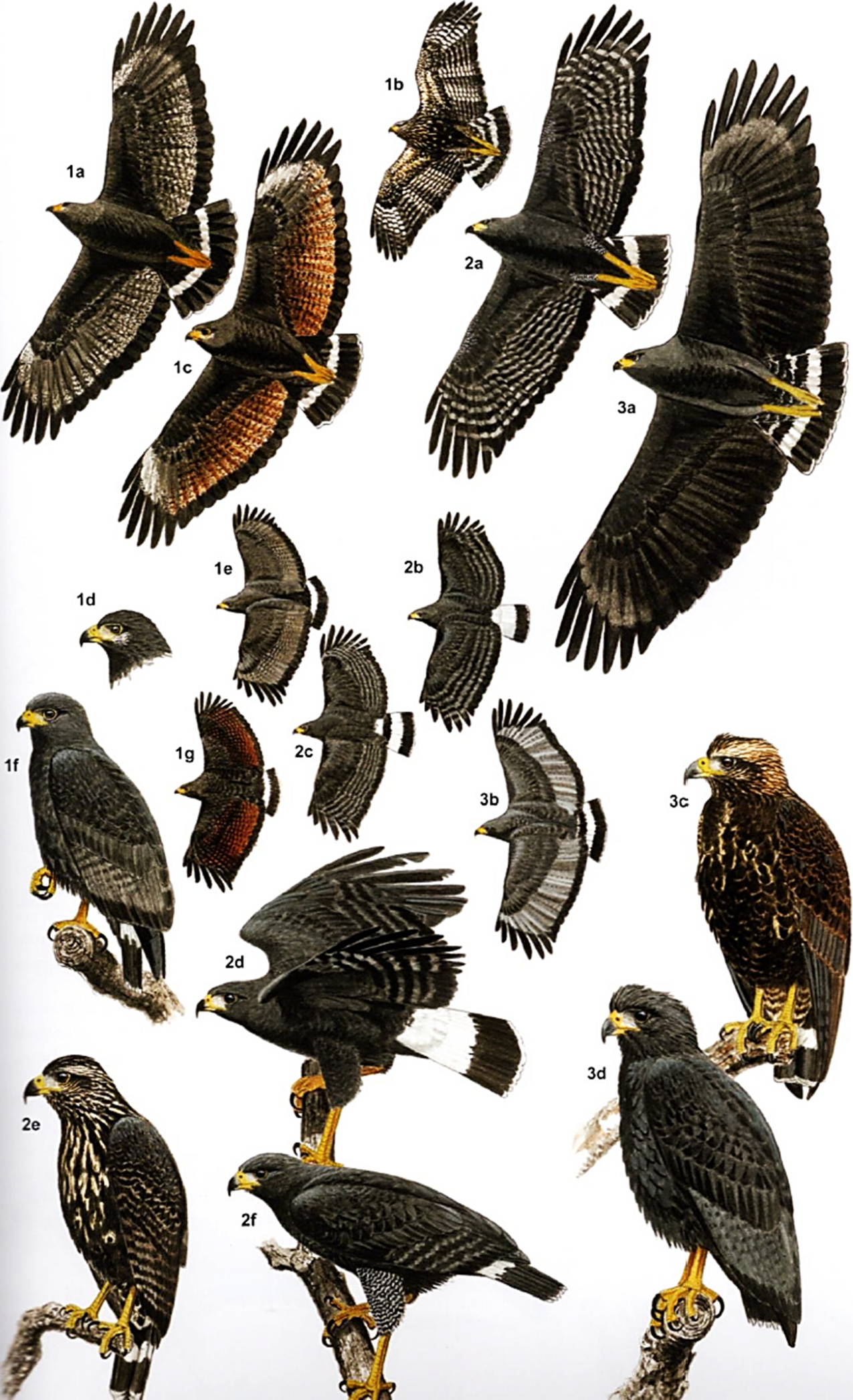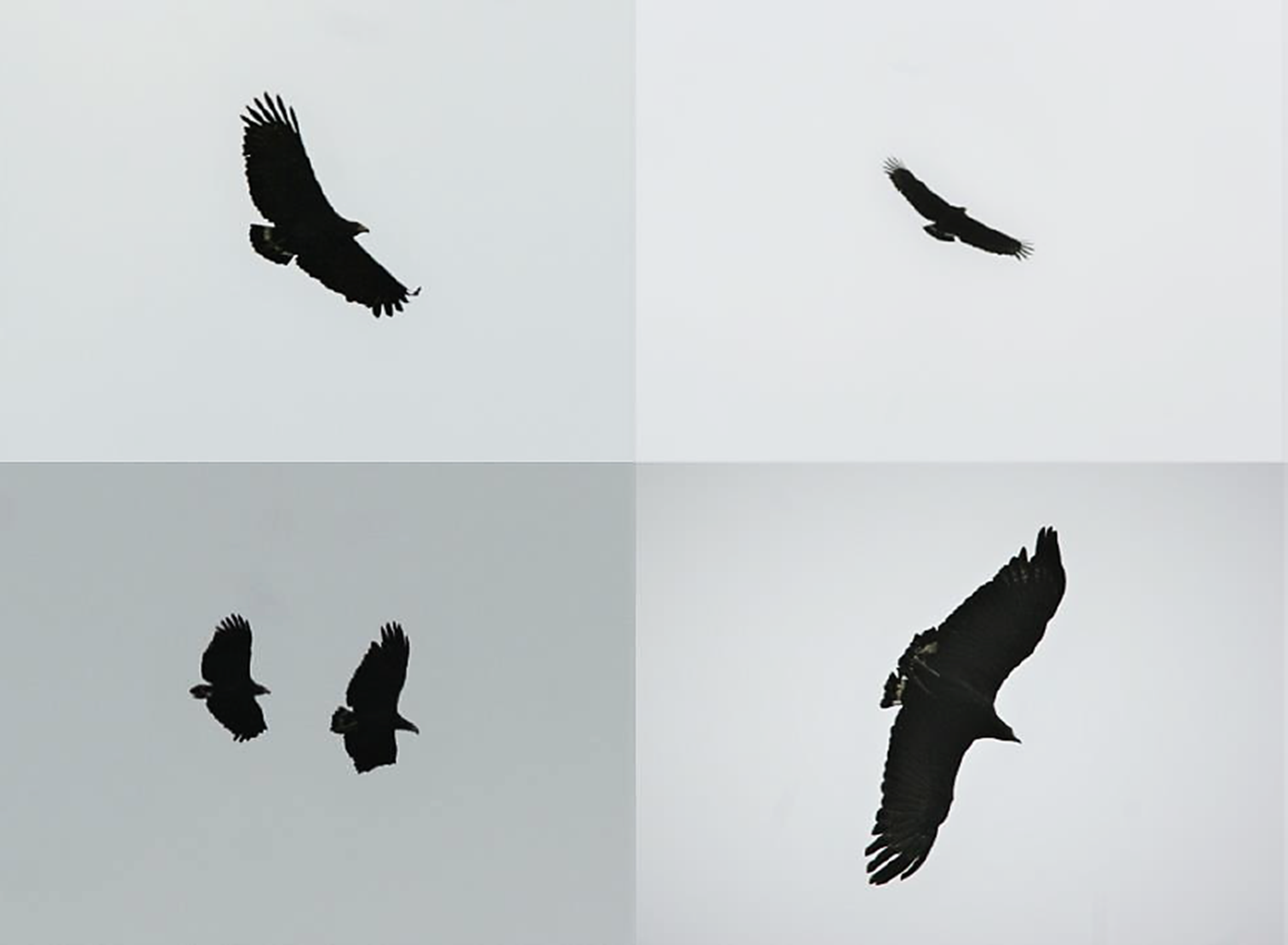A Great Black Hawk (Buteogallus urubitinga) adult was misidentified from photographs as an adult Solitary Eagle (Buteogallus solitarius) by García-Grajales et al. (2018) in a recent article in this journal. Solitary Eagles have a different wing shape and tail length from Great Black Hawks, shown well in Clark et al. (2006), the illustration reproduced here in as Figure 1, and Clark and Schmitt (2017), plate 15 and plate captions reproduced herein as Figures 2b and 2a. One can compare the photos in García-Grajales et al. (2018) with the illustrations and photos in Clark et al. (2006) and Clark and Schmitt (2017), Figures 1-3, and see that the wing shape of the eagle (3b in Figure 2b) is much wider and more triangular, compared to that of a Great Black Hawk (2a in Figure 2b); Great Black Hawk wings in flight show leading and trailing edges that are parallel. Also, the wings of a Solitary Eagle are noticeably longer, and the tail length is noticeably shorter than those of a Great Black Hawk, both of which are evident in the field, in figures, and in photographs. The photos in García-Grajales et al. (2018) clearly show characters of Great Black Hawk of longer tail extending far beyond wings and wings more parallel and not triangular. When compared side by side, these differences are easier to see, which can be done with our series of similar angled photos of Solitary Eagles in flight for comparison (Figure 3) with the photos in García-Grajales et al. (2018). Great Black Hawk have barred thigh feathers and Solitary Eagles do not. The photo in García-Grajales et al. (2018) (lower left) shows barred thigh feathers clearly. Finally, note the longer primaries (“fingers”) on the outer wings of Solitary Eagles, not shown by the adult in the photos in García-Grajales et al. (2018); these are very short. None of the photos of the alleged eagle in García-Grajales et al. (2018) are taken of its uppersides, where the white uppertail coverts would have been obvious (See 2b in Figure 2b). These coverts on Solitary Eagle are black (3b in Figure 2b). We contacted two Mexican raptor identification experts, Jorge Montejo and Ernesto Ruelas, who both agreed that the adult in the photos of García-Grajales et al. (2018) is a Great Black Hawk.

Figure 1 Soaring silhouettes of adult and juvenile Solitary Eagles, showing triangular wing shapes. Reproduced here with editor’s permission from Clark et al. 2006. Illustration by John Schmitt.

Figure 2a Captions for Plate 15, Buteogallus adults. Reproduced here with editor’s permission from Clark and Schmitt 2017.

Figure 2b Buteogallus adults. Plate 15. Reproduced here with editor’s permission from Clark and Schmitt 2017. Illustration by John Schmitt.

Figure 3 Solitary Eagle in flight photographs for comparison to similar angles of the Great Black Hawk in García-Grajales et al. (2018). Photos taken in Belize by Ryan A. Phillips.
We compared the photos in García-Grajales et al. (2018) to the illustrations in Howell and Webb (1995) and van Perlo (2006) and, if these guides were used, understand why the adult in the photos were misidentified. The eagle illustrations in those guides are more similar to Great Black Hawk than to Solitary Eagle; one can see this by comparing these illustrations with those showing correct wing shapes in Clark et al. (2006) and illustrations and photographs in Clark and Schmitt (2017).
García-Grajales et al. (2018) also cited an alleged nesting of a Solitary Eagle in Mexico by Smith (1982). One of us (WSC) has seen photos of the nestling, which showed darkly barred leg feathers. These feathers are solidly dark on nestling and juvenile Solitary Eagles. Smith’s nest record is most likely that of a Common Black Hawk (Buteogallus anthracinus).
Two of us (WSC and RAP) have observed many Solitary Eagles in flight in Mexico, Belize, and Peru, as well as hundreds of Great and Common Black Hawks in many countries. Furthermore, we two have reviewed hundreds of alleged Solitary Eagle or Buteogallus photos. We conclude that the published photos in García-Grajales et al. (2018) are of an adult Great Black Hawk.
Great Black Hawks and Common Black Hawks are regularly misidentified as Solitary Eagles. Therefore, caution should be taken when identifying Solitary Eagles, especially when documented outside of its known range. It is now possible to correctly identify Solitary Eagles in the field using the newly published characteristics (Clark et al., 2006; Clark & Schmidt, 2017). It is important to have correct identification of the species involved for records like this.











 text new page (beta)
text new page (beta)


